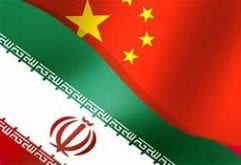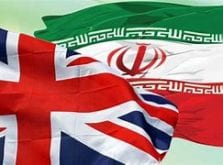Radiofarda – Iran’s central bank has announced a ban on the sale of foreign currencies at exchange bureaus. Under new government guidelines, exchange bureaus no longer have the right to buy, sell, or transfer foreign currencies, and the central bank will no longer provide cash to the bureaus.

Mohammad Ali Karimi, head of public relations for the central bank, announced on state-run television on April 13 that the guidelines aim to “redefine the job description of exchange bureaus,” adding, “They might be given the role of a mediator for cases when Iranian banks are not interacting with some foreign banks.”
The exchange rate of Iran’s rial to the U.S. dollar is now officially set at 42,000. Karimi said exchange bureaus can sell dollars to banks at the new price. However, there are no dollars available at that rate and no one is willing to sell dollars at the arbitrarily set rate.
It would be a different matter if the central bank would make dollars widely available at the new official rate, but that would drain the state’s dollar reserves, as companies and people would scoop up as much as possible because of their lack of trust for the local currency.
Previously, Iran’s central bank (CBI) would provide select exchange bureaus with between $50,000 and $100,000, which they were then allowed to sell at a profit of up to 15 percent.
According to the daily Qanoon, however, exchange bureaus are only allowed to buy or sell gold coins “until further notice.”

Iranian standing in front of a currency exchange bureau in Tehran
Wednesday April 11, 2018; photo by
Amid growing economic and political uncertainty, the rial has plummeted to a record low, dropping to an unprecedented level of 60,000 against the dollar on an emerging black market.
The rial has lost a third of its value this year alone. When President Hassan Rouhani assumed office in 2013, a dollar bought 36,000 rials. The devaluation has been continuous since the country’s 1979 revolution and the downfall of the monarchy, when a dollar bought 70 rials.
Rouhani’s administration declared on April 9 that it had set a single rate for the dollar, at 42,000 rials, and anyone carrying more than 10,000 euros ($12,345) would be arrested.
Tehran police reported that 12 “currency market schemers” had been arrested. Ayatollah Nasser Makarem Shirazi called for the execution of those “disrupting” Iran’s forex market.
“We have to pay a price if we do not act proactively,” he was quoted by Iranian media as saying on April 11. “In order to teach a lesson, we should execute, according to Islamic rules, a few foreign exchange traders who try to plunge the country into chaos.”
Many economists, including Paris-based Fereidoun Khavand, say controlling the foreign exchange market with executions or new guidelines is “a highly difficult task.”
“The reasons behind the disruption of Iran’s exchange market are mainly the confrontational foreign policy of the Islamic Republic, uncertainty about the future of the Joint Comprehensive Plan of Action (JCPOA), and its probable abrogation by President Donald Trump’s administration,” Khavand said, referring to Tehran’s nuclear deal with world powers.
Iranian Deputy President Eshaq Jahangiri also referred to JCPOA’s uncertain future. He said the feeling of despair among the people has fomented the foreign exchange market crisis.
In an interview with Radio Farda, Sweden-based economist Ahmad Alavi said the rial’s downward spiral was predictable. “Contrary to CBI’s promises, Iran’s economic structure has not been reformed, and fundamental elements such as inflation, hording of foreign currencies for a rainy day, as well as capital flight, still remain the main reasons behind the recent downward spiral of the rial.”
… Payvand News – 04/16/18 … —
 Shabtabnews In this dark night, I have lost my way – Arise from a corner, oh you the star of guidance.
Shabtabnews In this dark night, I have lost my way – Arise from a corner, oh you the star of guidance.


